The Satellite KZ Walldorf
The following texts form part of the History Nature Trail which has been built around the grounds of the former KZ Außenlager in Walldorf.
Ousting, Forgetting, Reminding
End of March 1945, US-American military units came to Walldorf. The war was over. The Social Democrat mayor Adam Jourdan, who had been driven out of office in 1933, was reinstated.
“Normale life” began again for the population. This “normality” of the post-war German society included an enormous thirst for action — reconstruction, demolition and und building anew. Thousands of displaced persons and refugees came into the towns and communities. The return of the soldiers was expected wistfully — fathers, brothers, husbands.
But this “normality” also included the fact that not much time was spent thinking about the 12 year long ‘nazification’ of state and society. Until the late seventies, no attention was given to the significance of the many hundreds of satellite KZ’s that had existed throughout the ‘Reich’.
The grounds of the camp were re-forested in the fifties. The knowledge about the historical meaning of the place vanished.
Inquiries of Foreigner Tracing Services directed to all town halls during the late forties and fifties were responded to, but were not scrutinized any further. So in 1951 in Walldorf it was stated that such a camp had existed here, under administration of the SS. The Jewish women imprisoned there were evacuated via an airport owned railway track on November 24, 1944. It was stated that no one knew who these women were and where they had been brought to, since the camp did not belong directly to the communal area of administration. Thus, the case seemed to be closed. The grounds of the camp were re-forested in the fifties. The knowledge about the historical meaning of the place vanished.
About 1970 Zsuzsanna Farkas, a former inmate of the camp, came to Town Hall and asked communal employees for the location of a memorial stone for the former KZ. Nobody was able to give an answer. The Town Hall employees assumed that Mrs. Farkas had confused places. They knew nothing. The had never heard about it. This changed only a few years later. In 1972, during a study trip, three young men from Mörfelden-Walldorf discovered a map showing all satellite KZ’s in the Buchenwald KZ memorial place. They were bewildered to read the name of their own home town there: Walldorf.

So they started investigating on their own. Federal Archive files eventually provided the confirmation: Here, in this piece of woodlands, a satellite camp of the KZ Natzweiler had existed from August to November / December 1944. 1.700 young Jewish women from Hungary had been put up in shacks. They were supposed to build the first concrete covered runway of Frankfurt airport. This building project was “vital for warfare” according to German “Luftwaffe”. In town no one was really excited about this new knowledge. In the seventies, many felt that the work the young men had done was “fouling the own nest”.
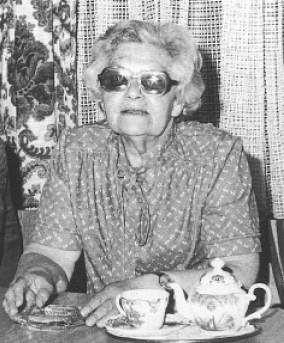
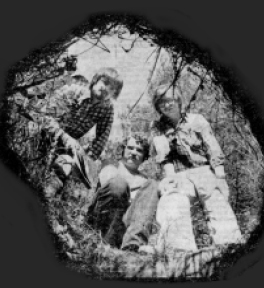
City Council members discussed in length whether a memorial stone should be erected at the site, and if yes, with which inscription. In March 1980 the stone was inaugurated and presented to the public during a dignified ceremony. Within the framework of the municipal cultural program “Meeting Hungary” the museum again took up investigations regarding the camp in 1996: a multitude of new files, particularly protocols of witness accounts given by women previously imprisoned here could be viewed and made accessible to the public within the scope of an exhibition. A Hungarian Jewish woman living in Walldorf heard about this project. Her friend (Margit Horváth) had been imprisoned here in the camp in 1944. We had intensive talks and interviews with her. The 12th class students of Bertha von Suttner School used this as an opportunity to continue investigating on their own. They went to Hungary and met another survivor of the Walldorf KZ in Pápa. Deeply moved they returned to Mörfelden-Walldorf.
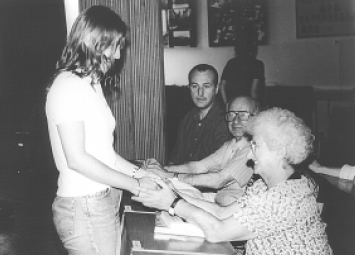
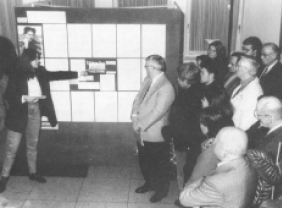
They were doing a lot — also with regard to the construction company these women had been forced to work for in 1944. Equally, City Council the press, the museum, and more and more (a growing number of?) people of our town got involved. The result of this work done by most different people and groups is the “Historic Nature Trail” inaugurated in November 2000. We wish to thank all those who have participated in this work. Intensive occupation with the history of this satellite KZ is now a matter of course for our population…
“In an age when we wanted to be young and beautiful, we were arrested and deported…” Ibolya says (born 1921)
After military defeats at the Eastern front in 1942/43, the Hungarian government had tried to disengage from its to date ally Germany. Hungary took up secret diplomatic contacts with the Western allies. Talks were held regarding a possible separate peace. In order to prevent this, German troops marched into Hungary on March 19, 1944. The former ally Hungary had pursued an anti-Semitic policy as well. The Hungarian so called 3rd Law on Jews, passed in 1941, resembled the Nuremberg racial laws of 1935. But the Hungarian government had not complied with the German request to adopt the program of the so called “final solution”. This started only with the day of the invasion of the German Wehrmacht. At that time, about 800.000 Jews lived in Hungary. The NS-leadership had prepared everything in a general staff fashion. April 4, 1944: Displaying the yellow star becomes compulsory in Hungary. Beginning mid April 1944, the Jewish population had to live in ghettoes. Already from May 15, 1944 the deportation trains started rolling towards Auschwitz.
“We were unloaded at a small railway station near Frankfurt. It was noon time, we were exhausted and had no water …” Szeren remembers.
During the roll call of August 19/20, 1944 in Auschwitz, 1.700 young Jewish women aged 14 to 45 were selected for a work assignment at Frankfurt airport. Since the beginning of the war the airport was under the authority of the German air force. For the new jet fighter plane (Me 262) a concrete covered runway was necessary. the building project was labeled “important for warfare”. The “Organisation Todt” filed an application for the necessary work force with the SS main office for economical administration on August 10, 1944 — that meant: KZ inmates. The camp consisted of six shacks for the inmates and a guard barrack — constructionally, everything was in a comparatively new and good shape. There was a barbed wire fence all around the camp. After a three day ride during which the women had barely received anything to eat or drink, they had to march from the railway station through the forest into the camp. One of the 1.700 women already died on this day of arrival: Jolan Freifeld; she was just 40 years old. The former camp commandant commented on the death of Jolan Freifeld during an interrogation in 1978:
“Today, I can not say anymore if the inmate was already dead upon arrival, or died right after that. Even if the explanation on the documentation is contradicting itself, I cannot say anything different today. The cause of death “cardiac and blood circulation insufficiency” stated by myself must have been coming about because her fellow inmates had talked about such a diagnosis …”
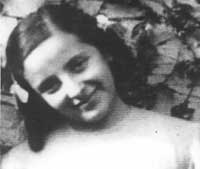
Vera was only 13 years old in 1944. She says:
“Since I was too young, I was separated from my mother (in Auschwitz) and came into Block 12 in Camp B. II. C. My mother came to Block 3. But I took the risk any went to my mother.… We were selected several times. On August 19, my mother and were sorted out into the separated group counting 1,700 persons which was adjacently “waggoned in”. On August 22, 1944 our train arrived in Frankfurt/Main an. We were rushed — totally exhausted — on a very hot day, we were all thirsty and had no water. I can remember that we had to walk on foot to the camp; the way seemed to very long to me. Me thinks that one of us was shot on the way”.








 Top
Top